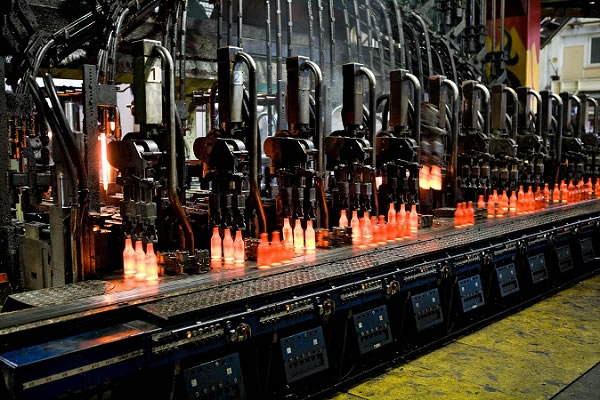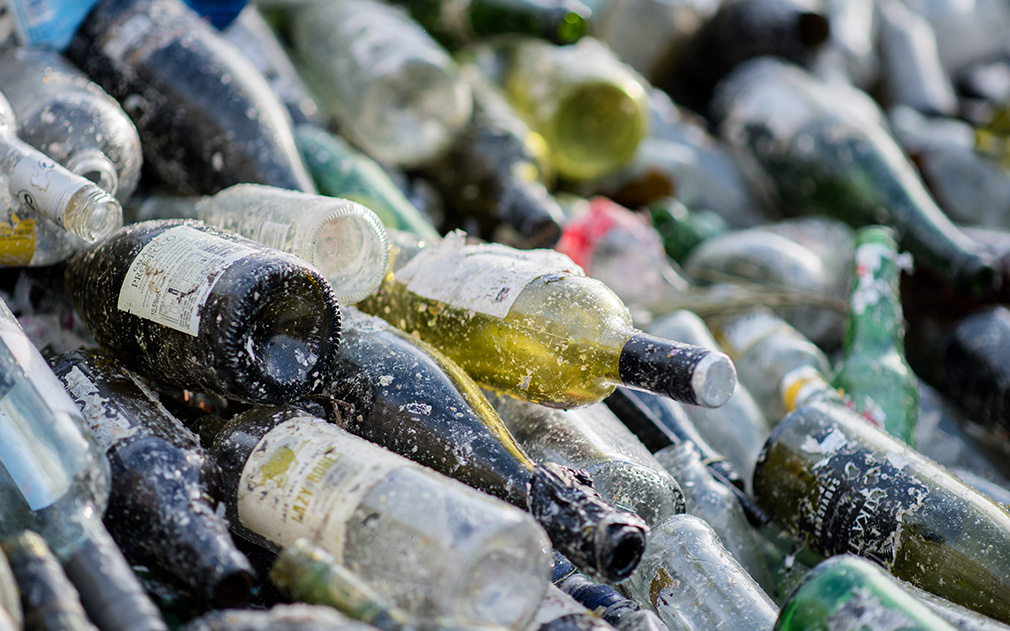Zero Waste Blog, Zero Waste Ideas
4 Facts You Should Keep In Mind About Glass Recycling
Glass is a wonderful substance. The good thing about glass recycling is that the glass retains its quality. According to the EPA, Americans generated 11.5 million tons of glass waste in 2011, but only 28 percent of that glass was recycled. That number could easily be higher, as glass can be recycled an infinite number of times. Imagine how many bottles of soda, juice and glass jars are used daily. If we were to simply throw them away, the environment would suffer greatly.
Here are five facts you should keep in mind about glass recycling:
EFFECT OF GLASS ON ENVIRONMENT AND HUMNAN HEALTH
The major environmental impact of glass production is caused by atmospheric emissions from melting activities.

- The only greenhouse gas emitted during the production of glass is CO2.
- SO2 and NOx from the fuel and/or from decomposition of sulphate in the batch materials can contribute to acidification.
- Evaporation from the molten glass and raw materials can cause release of particles into the atmosphere.
- Other environmental issues are water pollution, the use of non-renewable natural raw materials such as sand and minerals, production of solid waste and emission of volatile organic compounds (used in production of mirrors and coatings).
- The development of environmental techniques is still ongoing, and minimising and controlling these emissions in an integrated way is a complex matter.
But glass is not so harmful. If recycling is properly done then it is even better than plastic.
Table of Contents
BENEFITS OF GLASS RECYCLING?
Glass Recycling Saves Energy
Recycled glass melts at a lower temperature than its raw material components. The amount of energy required to make glass from scratch is 40% more than that needed to recycle it. If recycling is done on a large scale, maximum profit is achieved. Research has shown that recycling of a glass bottle can produce enough energy to light up a normal bulb for 4 hours.
Glass Recycling Reduces Industrial Pollution
The levels of pollutants that are released daily into the air around the world are very alarming. Recycled glass reduces the emissions of air and water pollution by around 20% and 40% respectfully. Reducing industrial pollution benefits not only the environment but also the entire ecosystem.

Glass Recycling Pays
Some countries have capitalized on the financial gains that can be had from recycling glass. In America for instance, some states have recycling programs that offer cash incentives for most recycled glass products. Recycling 1,000 tons of glass creates slightly over 8 jobs.
Glass Recycling Conserves Natural Resources
Recycling glass saves on the need to obtain more raw materials to make new glass. Industrialized nations with strong economies are aware that their economies grow more when monies do not have to be earmarked for tree planting or purchasing fossil fuels. By recycling glass, they save the natural resources that they already have.
Glass Recycling Conserves the Landscape
The aesthetic value of the environment is greatly improved through glass recycling. Many people tend to litter parks and parking lots with glass and another packaging. Due to the inorganic nature of glass, it will never decay. Recycling glass is very simple, and you can start the process by dropping the glass you have into recycling bins.
HOW ARE GLASS BOTTLES RECYCLED?
Of course, when it comes to recycling, glass is among the most recyclable materials on the planet – 100 percent recyclable, in fact. Recycled glass can be substituted for up to 95% of raw materials.
Which is probably why 80 percent of all recovered glass bottles are made into new glass bottles. Why does this matter? Because every 10 percent increase in recycled glass results in a 5 percent decrease in emissions and a 3 percent decrease in energy consumption.
Domestic waste glass (known as cullet) is easy to recycle. The UK currently recycles around 71% of container glass, like bottles and jars. The glass sector is working towards a 90% collection rate for glass by 2030.
Glass can be collected in bottle banks or as part of your kerbside collection. However, there is still more we can all do, such as remembering to recycle our clear glass jars which are often forgotten.
Here one of SUEZ Glass recycling process:

Glass is sent to one of resource recovery centres or material recycling facilities where it is screened, decontaminated, sorted and baled.
Glass containers for food and beverages are 100% recyclable, but not with other types of glass. Other kinds of glass, like windows, ovenware, Pyrex, crystal, etc. are manufactured through a different process. If these materials are introduced into the glass container manufacturing process, they can cause production problems and defective containers.
Color sorting makes a difference, too. Glass manufacturers are limited in the amount of mixed color-cullet (called “3 mix”) they can use to manufacture new containers. Separating recycled container glass by color allows the industry to ensure that new bottles match the color standards required by glass container customers.

Some recycled glass containers are not able to be used in the manufacture of new glass bottles and jars or to make fiberglass. This may be because there is too much contamination or the recycled glass pieces are too small to meet manufacturing specifications.
Or, it may be that there is not a nearby market for bottle-to-bottle recycling. This recovered glass is then used for non-container glass products. These “secondary” uses for recycled container glass can include tile, filtration, sand blasting, concrete pavements and parking lots.
The recycling approach that the industry favors is any recycling program that results in contaminant-free recycled glass. This helps ensure that these materials are recycled into new glass containers.
While curbside collection of glass recyclables can generate high participation and large amounts of recyclables, drop-off and commercial collection programs tend to yield higher quality recovered container glass.
Why can’t I recycle glass through curbside pickup anymore and what can I do?
While most glass remains decidedly “recyclable,” there are several reasons that city-run recycling pick-up programs have been scaling back on allowing glass in recycling bins.
If your county has decided to stop accepting glass in its curbside recycling program, you should have received a notice. If you think you may have missed it, finding out your county’s recycling guidelines is a quick Google search away. Enter something like “[county name] curbside recycling guidelines.”

If you can’t put glass in your recycling containers anymore, you’ll quickly realize how much faster your trash cans will fill up. Luckily there is a solution. Save your glass in a separate bin and make routine trips to your nearest glass recycling plant (again, a quick search will reveal your local recycling centers), where you’ll likely further sort the glass into bins by color. This may be more of a hassle than we’re used to, but (provided you don’t have to drive far to get to a recycling facility), it’s one small way that each of us can help offset our carbon footprint.
The bottom line is that recycling is part of the zero-waste concept, but zero waste is not necessarily a part of recycling. The ZERO WASTE INITIATIVE is extremely useful tools in the fight against waste. Additionally, usually stay in the loop to learn more about how you and your business can continue to strive towards zero waste principles.

